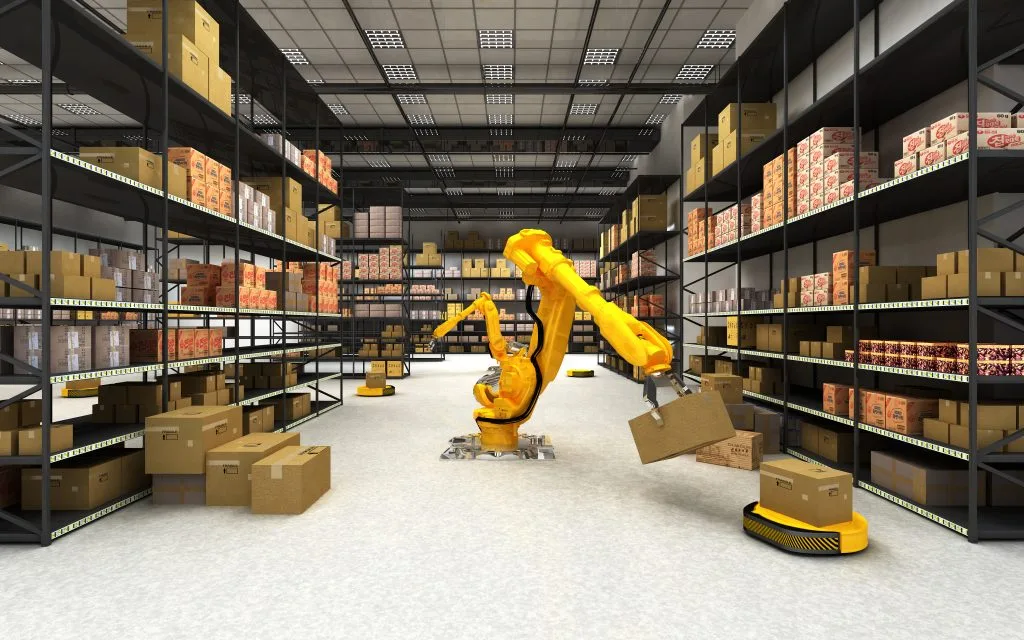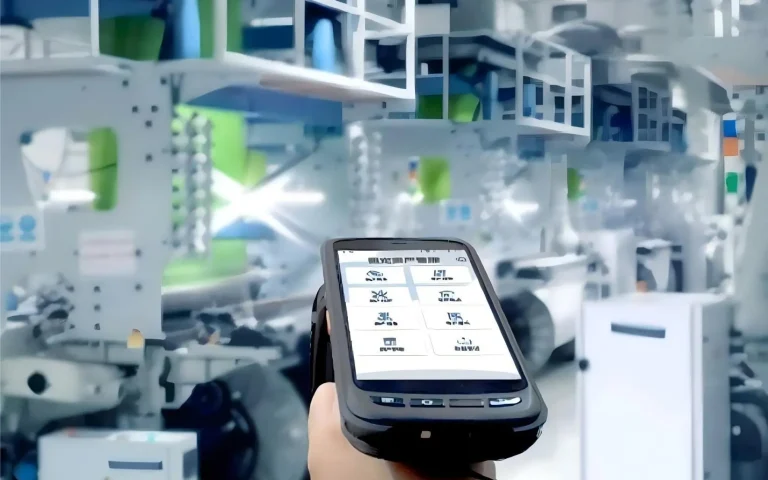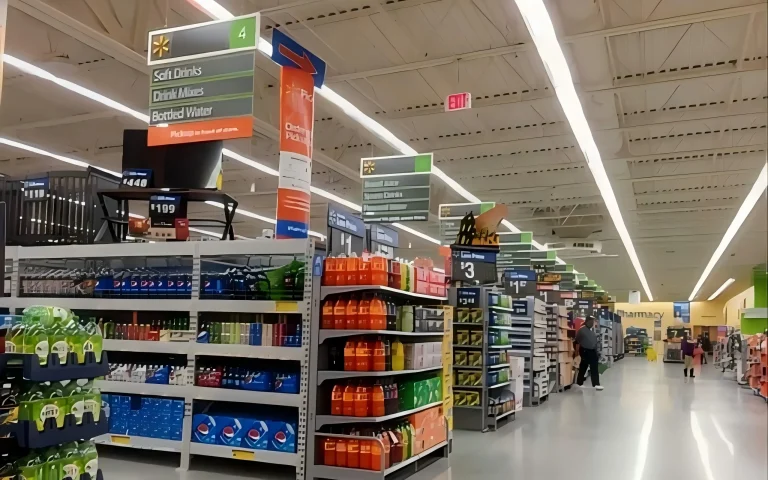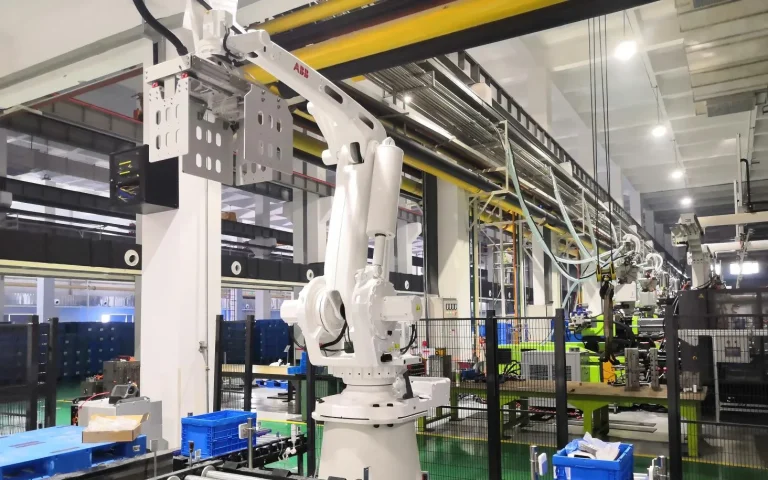
Intelligent warehousing and logistics management
The rapid growth of e-commerce and logistics industries will place significant pressure on warehouse management, necessitating highly efficient, centralized goods sorting systems. Increasingly, centralized logistics warehouses find traditional methods inadequate for handling complex sorting tasks. The introduction of RFID technology automates and digitizes sorting operations, enabling all goods to swiftly find their designated destinations.
1. Goods Sorting
The primary implementation method of RFID automated sorting systems involves attaching electronic tags to goods. By installing reader devices and sensors at sorting points, when tagged items pass through the reader equipment, the sensors detect the approaching goods and signal the reader to initiate tag reading. The reader then transmits the tag information to the backend system, which directs the goods to the appropriate sorting outlet. This achieves automated sorting, enhancing both accuracy and efficiency.
1.1 RFID Automated Sorting Process
- Before sorting operations commence, picking information must first be processed. Picking materials are generated based on the sorting slips output by the order processing system. Automatic sorting machines are employed to sort parcels, enhancing sorting accuracy.
- Relevant goods and classification information are input into the automated control system via the information input device of the automatic sorting machine.
- The automated sorting system utilizes a computer control center to process goods and classification information automatically, generating data instructions transmitted to the sorting machinery.
- The sorting machine employs automatic identification devices such as radio frequency identification (RFID) technology to automatically classify and retrieve goods. When goods are transferred via transfer devices onto conveyors, the conveying system moves them to the classification system. The sorting gate discharge device then ejects express parcels from the sorting machine according to pre-set classification requirements, completing the sorting operation.
1.2 Features of the Automated Sorting System
- Capable of continuously sorting goods in large volumes. By adopting the automated assembly line approach used in mass production, automated sorting systems operate continuously without constraints from weather, time, or human physical limitations. A typical automated system can process 7,000 to 10,000 items per hour, whereas manual sorting achieves only about 150 items per hour. Additionally, manual sorters cannot sustain such labor intensity for an 8-hour shift.
- The sorting error rate is extremely low. The sorting error rate of an automated sorting system primarily depends on the accuracy of the input sorting information, which in turn relies on the input mechanism. If manual keyboards or voice recognition are used for input, the error rate exceeds 3%. However, if electronic tags are employed, errors are eliminated. Consequently, the current trend in automated sorting systems is to adopt radio frequency identification (RFID) technology for goods identification.
- Sorting operations have largely achieved unmanned operation. One of the primary objectives of establishing an automated sorting system is to reduce personnel requirements, alleviate the labor intensity of workers, and enhance personnel efficiency. Consequently, the automated sorting system minimizes personnel usage to the greatest extent possible, achieving essentially unmanned operation.
- The application of RFID technology comprehensively optimizes express parcel processing to achieve paperless delivery, intelligent pickup, reduced manual sorting, convenient delivery, and minimized costs. This addresses current issues in China’s express industry, including wasteful and environmentally unfriendly shipping labels, It addresses issues such as low sorting efficiency, slow processing speeds, package damage, rough handling, high costs, inadequate control over prohibited items, and customer information leaks caused by manual sorting.

From a technical standpoint, it is challenging for RFID to reliably identify each item in such a fast-paced environment. Typically, over five scans are required to reliably determine the tag of the current item, yet in many cases, items pass through the antenna’s radiation range for only about 0.1 seconds (with reduced range when tag performance is poor). Therefore, this reader must achieve an inventory speed of at least 50 rounds per second. Ideally, this should be achieved through combined processing by antennas in two independent zones, ultimately correlating tag data with the item’s position on the conveyor belt.
RFID technology enables the automatic, high-speed sorting of bulk parcels and express shipments by capturing relevant logistics information via electronic tags. The integration of RFID technology with diverse information processing significantly enhances cargo sorting efficiency, establishing highly effective management platforms for various logistics operations.
2. Warehouse Management
2.1 Advantages in Intelligent Warehouse Management
- Time-sensitive control is achievable: Since barcodes lack expiration information, electronic tags must be affixed to perishable foods or time-sensitive goods, significantly increasing labor demands.
- Enhances efficiency and reduces costs: In warehousing, traditional barcodes require administrators to repeatedly move and scan each item during inventory operations. Additionally, stacking density and height are constrained for inventory purposes, limiting warehouse space utilization.
- The tags have a large storage capacity, long service life, and are reusable.
- Prevent theft and reduce losses: UHF RFID tag technology enables information systems to swiftly detect and alert unauthorized product movements during inventory transactions.
- Effective inventory control: While inventory lists are often assumed accurate when matching stock levels, data indicates nearly 30% of lists contain errors—primarily due to barcode scanning inaccuracies during physical counts.
2.2 Important Notes
- When adopting these new IoT technologies, thoroughly weigh their advantages and disadvantages, and prepare to address potential resistance from conservative factions within the organization.
- To enable warehouse management personnel to master IoT operational techniques as quickly as possible, provide comprehensive training to enhance their professional skills. This will better serve warehouse management and improve operational efficiency.
- Given that IoT technology has not yet achieved widespread adoption, persistent challenges include technical immaturity and high costs. Enterprises should therefore exercise caution when implementing these technologies, carefully evaluating their suitability based on specific operational contexts.
2.3 Development Trends
- Although RFID IoT technology faces certain disadvantages and challenges in warehouse management, its overall value outweighs its drawbacks. Consequently, it is poised for promising development in the future. Continuous refinement will likely enhance its convenience and efficiency. With the advancement of integrated sensing technologies, this approach will become a prevailing trend. Growing emphasis on the physical properties of goods will drive the integrated application of diverse sensing technologies across the warehousing industry.
- With the rapid advancement of RFID technology in the warehousing industry, leveraging IoT technology enables the networking of independent smart warehousing systems. This achieves interoperability and interconnection, forming a true warehousing IoT ecosystem. Building upon smart warehousing, this represents a new wave of transformation that will revolutionize warehousing informatization. It will completely disrupt the existing architecture of logistics information systems and exert a profound impact on modern logistics technology and equipment within operational processes. This will bring revolutionary changes to the structure of modern warehouses and logistics centers.




